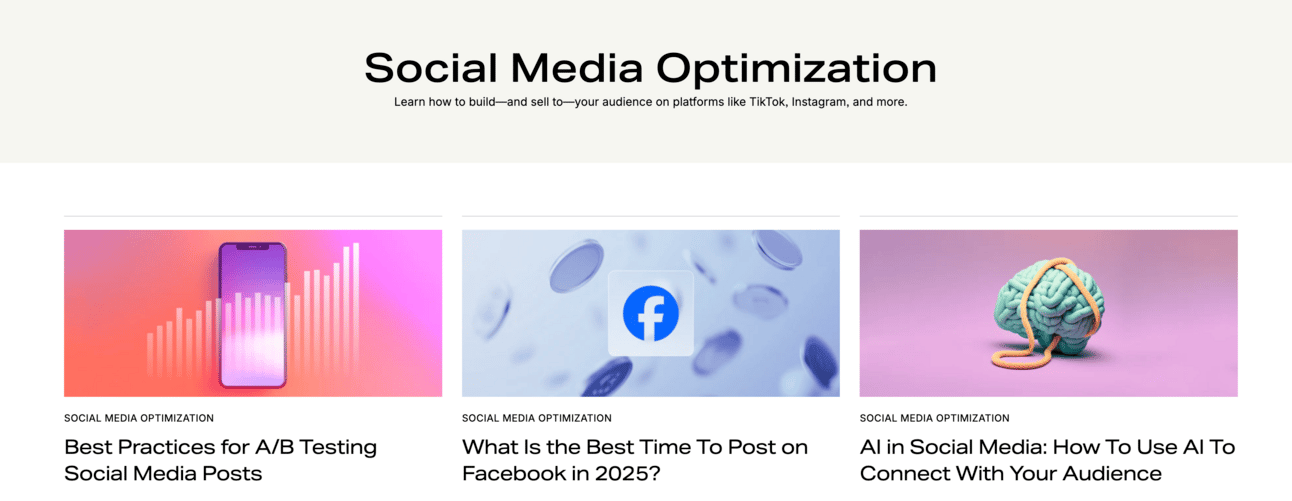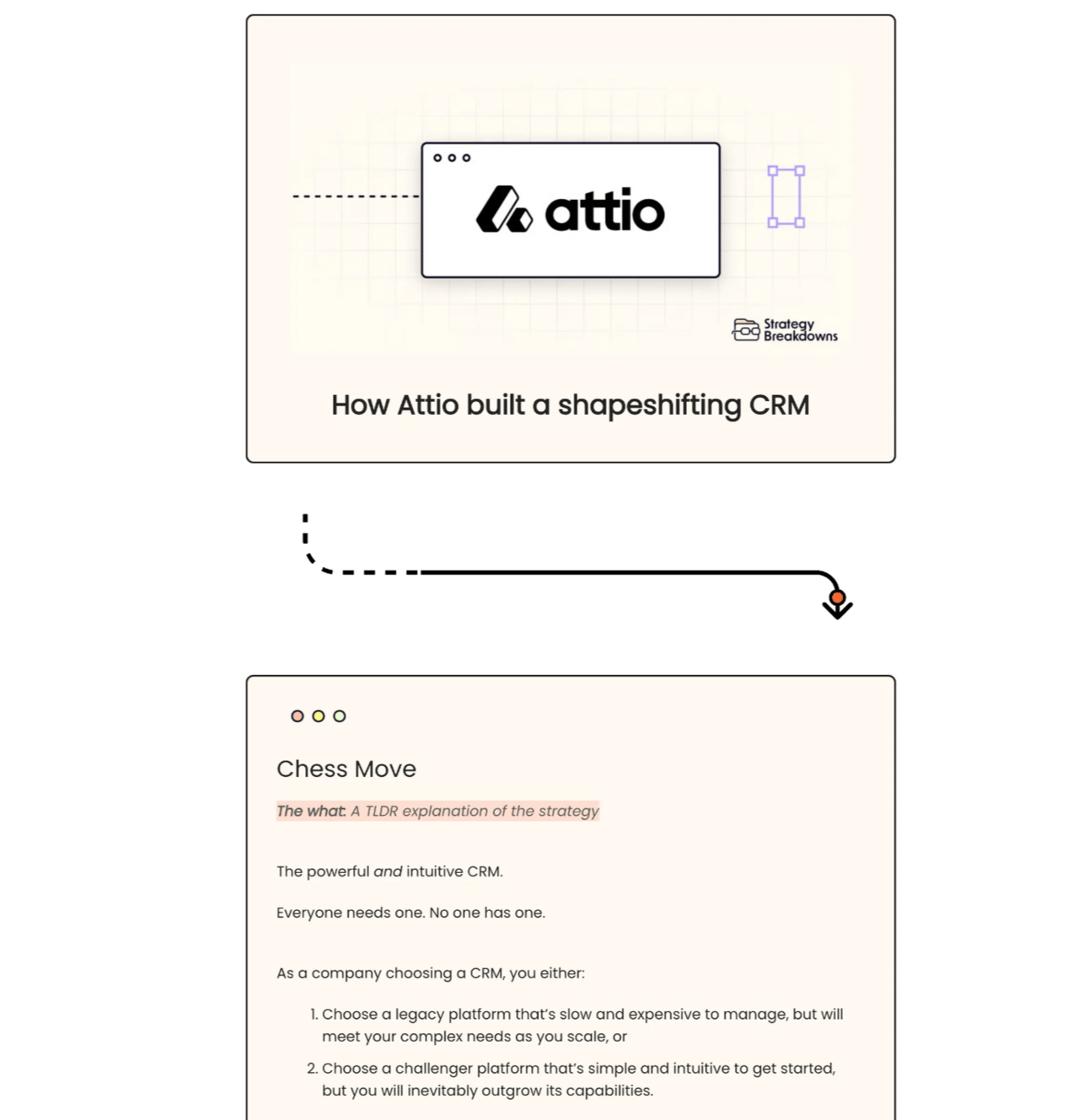Hey, I’m Isaac 👋 I founded Pistachio, where we’ve worked with brands like BuzzFeed and Clay to understand their audience, build trust and deliver measurable outcomes through content-led growth.
If you want to chat about your own strategy, book a free call here.
The 95% Advantage
Last week I got another one of those LinkedIn messages. You know the type.
"Hi [First Name], I noticed you work in marketing and thought you might be interested in a quick 15-minute call about how [Generic Software Company] can help [Your Company] increase conversions by X%."
I deleted it straight away. Just like I delete the dozen others that land in my inbox every day.
Here's what's interesting though. That message probably worked when the company first started using it. Maybe it even worked really well. But now? It's just noise in an increasingly crowded inbox, competing with hundreds of other companies using the exact same playbook.
This is the reality most marketers are facing today. The tactics that used to work are getting more expensive and less effective. Everyone has access to the same AI tools, the same targeting capabilities, and the same "growth hacking" strategies.
But there's something most brands are missing. A massive strategic opportunity hiding in plain sight.

The Banner Ad That Changed Everything
In 1994, AT&T published the first banner ad on the internet. It appeared on HotWired magazine's website with a simple message: "Have you ever clicked your mouse right here? You will."

People did click. That ad had a 78% click-through rate.
Fast forward to today, the average banner ad gets a 0.5% click-through rate. That's an 88x decline in effectiveness.
But here's where it gets interesting. This isn't just about banner ads getting old. It's about a fundamental shift in how marketing works in competitive markets.
When HotWired showed that first banner ad, people clicked because they'd never seen anything like it. The experience was novel. There was no competition for attention. No banner blindness. No ad blockers.
Today, we see over 10,000 ads per day. Our brains have evolved sophisticated filtering mechanisms to ignore most marketing messages. What used to be breakthrough creative is now background noise.
The same pattern shows up everywhere. Email open rates declining while volume increases to over 30 billion emails sent daily. Social media organic reach plummeting as more brands flood the feed. Even sophisticated AI targeting creating bidding wars that drive acquisition costs through the roof.
Every effective marketing tactic eventually becomes ineffective through overuse and competition.
If it works, people will copy it. Once people copy it, it stops working.

The Fundamental Opportunity
But here's what most marketers don't realise about their targeting efforts.
Research reveals that only 5% of B2B customers are actively in the market to purchase a service at any given moment.
Think about that for a second. All those sophisticated AI tools, all that personalised outreach, all those optimised landing pages are fighting over the same tiny slice of the market.
Meanwhile, 95% of your potential customers aren't ready to buy yet. They're not actively searching for solutions. They're not responding to sales outreach. They're going about their daily business, completely outside your conversion funnel.
While everyone else fights expensive bidding wars for today's buyers, smart brands are building relationships with tomorrow's buyers.
Take Attio's strategy. Instead of cold emailing decision-makers with demo requests, they sponsor newsletters and podcasts that business professionals read and listen to regularly. They’ve even launched a full-scale creator program.
They're not trying to catch people at the exact moment they need CRM software. They're building familiarity and trust with the 95% who will need it eventually.
When those professionals do become ready to buy, Attio isn't just another vendor. They're a trusted source that's been providing value for months or years.
That's the strategic opportunity most brands are missing. The 95% represents an open space where you can build relationships with less competition.

The Immunity Effect
There's another reason this approach works better long-term.
Remember that LinkedIn message I deleted? The sender probably sent 500 identical messages that day. Maybe 10 people responded. That's a 2% response rate, which in today's market might be considered decent.
But what happens next month when they send the same message to a different list? Or when their competitors start using similar outreach? Or when LinkedIn's platform changes?
The effectiveness degrades through "channel saturation".
Compare that to relationship-building. When HubSpot releases a free tool that genuinely helps marketers do their jobs better, that value doesn't degrade over time. In fact, it compounds. Each person who uses the tool becomes more likely to trust HubSpot's expertise. Some become advocates who recommend it to colleagues.

Just one of HubSpot’s 150+ free tools and resources.
The tool keeps working years after it was created, while that LinkedIn message stops working after a few weeks.
This is why banner ad performance collapsed while content marketing has grown into a $400 billion industry.
Interruption gets less effective over time. Value delivery gets more effective.

Building Both Engines
The smartest brands today aren't choosing between immediate conversion and long-term relationship building. They're doing both, but with a crucial difference from their competitors: they're investing in tomorrow's buyers while everyone else ignores them.
Here's what this looks like in practice:
For the active 5%: Companies like Gong send highly personalised video messages to prospects they know are actively evaluating sales software. These messages reference specific company challenges and demonstrate genuine understanding of the prospect's situation. It's resource-intensive, but highly effective for accounts ready to buy now.


For the 95% who aren't ready yet: Shopify built a comprehensive educational ecosystem around eCommerce that helps business owners whether they use Shopify or not. Their blog, courses, and tools attract millions of visitors who aren't ready to start an online store yet. When those visitors eventually are ready, Shopify is the obvious choice.
The key insight is that these aren't competing strategies. They're complementary approaches that create a sustainable competitive advantage.
When you're fighting for the active 5%, you're competing with everyone else who has the same tools, the same data, and the same targeting capabilities. It becomes almost a pure bidding war.
But when you build relationships with the 95%, something different happens. Trust compounds. Each valuable interaction makes the next one more likely to succeed. People start recommending you to colleagues. Your audience becomes a distribution channel.
Most importantly, when someone from your 95% eventually becomes ready to buy, you're not starting from zero. You're not competing against dozens of other vendors for their attention. You're already top-of-mind as the helpful company that's been providing value all along.
That's an unfair advantage your competitors can't just outspend their way past.

The Bigger Picture
AI has made everyone better at targeting the active 5% of buyers. That's created more competition, which means higher costs and lower margins for the tactics most companies rely on.
But AI hasn't changed something fundamental about human psychology. People still prefer to buy from companies and people they know, like and trust. They still make decisions based on relationships and past experiences.
The brands that understand this are building tomorrow's competitive advantage while their competitors fight expensive battles for today's buyers.
Meanwhile, the 95% who will be ready tomorrow, next month, or next year are largely ignored. That's where the real opportunity is.
The question isn't whether you should stop trying to convert today's buyers. The question is whether you're also building trust with tomorrow's buyers while your competitors are focused elsewhere.
Because when those future buyers become ready to purchase, having an existing relationship isn't just an advantage. It's an unfair one.

If you enjoyed this post or know someone who may find it useful, please share it with them and encourage them to subscribe: brandchemistry.co/p/the-95-advantage
When you’re ready, here’s 3 ways I can help you
The Modern Media Masterclass walks you through how to use organic content channels to build your brand and business.
Get the clarity and direction you need to turn content into a growth engine that drives brand trust and business results. Flat fee. No contracts. No lock-ins.
I’ve worked with brands like BuzzFeed and Clay to launch, grow and monetise organic content channels that drive real business results. Book a call today and lets see how I could help you.

